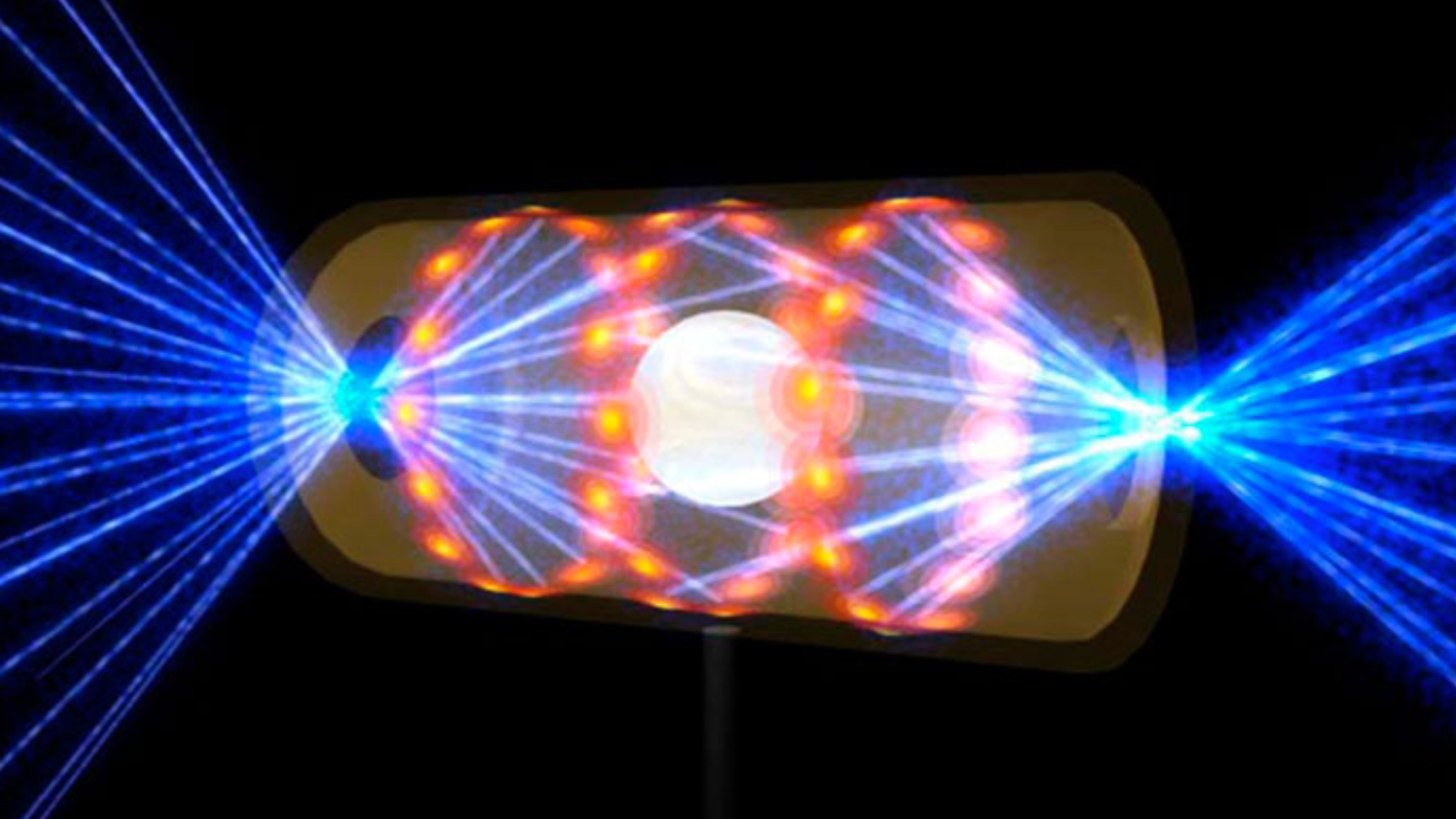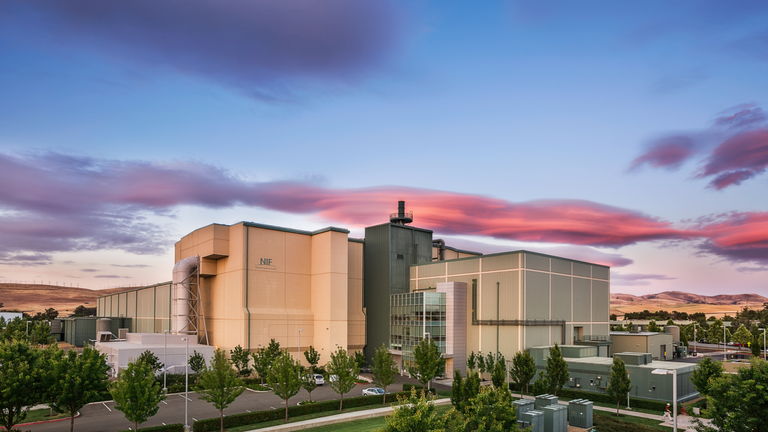A laboratory in the US is on the cusp of a breakthrough in nuclear fusion research which would see the fuel it generates release more energy than is needed to ignite it.
The US National Ignition Facility (NIF) confirmed that a successful experiment on 8 August “made a significant step” toward this goal, which is known as ignition
It saw light focused from the facility’s enormous laser systems – the size of three American football fields – on to a target smaller than a BB pellet made of deuterium and tritium, two isotopes of hydrogen with different numbers of neutrons.
This laser beam produced a hot spot on the pellet the diameter of a human hair, which generated “more than 10 quadrillion watts of fusion power for 100 trillionths of a second”.
As the pellet heated, it yielded 1.35 megajoules (MJ) of energy, approximately 70% of the laser energy beamed at it, and closer than ever before to the ignition point of an energy yield exceeding the 1.9 MJ from the laser.
Nuclear fusion – the same process that occurs inside the hearts of stars – is a potentially completely green source of energy.
Unlike nuclear fission, the only type of nuclear power currently in use, which splits apart atoms such as uranium to capture the energy released, fusion merges two nuclei together to form a heavier element.
As the heavier element has less mass than the two nuclei which formed it, the excess mass is turned into energy, as explained by Einstein’s famous formula E = mc².
Although the full scientific results of the research will be published in a peer-reviewed journal, the NIF’s initial analysis shows an eightfold improvement over experiments conducted in spring of this year, and a increase 25 times over the NIF’s record yield in 2018.
This result is a historic step forward for inertial confinement fusion research, opening a fundamentally new regime for exploration and the advancement of our critical national security missions,” said Kim Budil, the director of the Lawrence Livermore National Laboratory which houses the NIF.
“It is also a testament to the innovation, ingenuity, commitment and grit of this team and the many researchers in this field over the decades who have steadfastly pursued this goal.”
Ms Budil added: “For me it demonstrates one of the most important roles of the national labs – our relentless commitment to tackling the biggest and most important scientific grand challenges and finding solutions where others might be dissuaded by the obstacles.”

